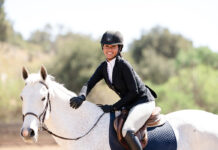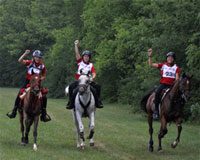Crossing ditches is a must when you’re working around a ranch; the move can also be part of ranch riding competitions set up to mimic real working conditions. While some horses will walk, trot, or jump over any ditch, others—especially those not raised on pasture—may balk at a ditch. Here, trainer Cody Crow helps you encourage and teach your horse to cross a ditch without hesitation.
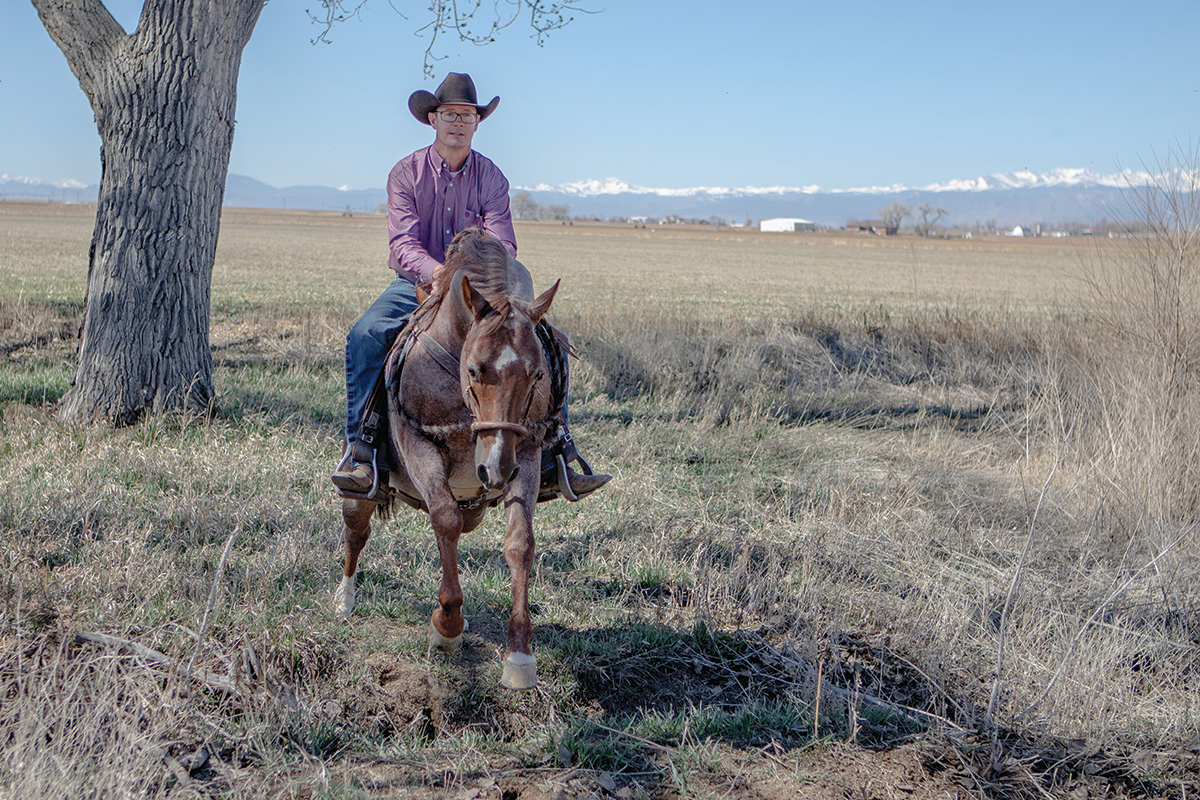
Don’t Force the Issue
Crow says he often sees riders force their horses to keep facing the ditch when the horses are showing fear.
“What I won’t do is force the issue,” he says. “That’s the biggest mistake that people make. Riders will go to their leg and create a lot of pressure. The ditch itself creates anxiety and pressure for the horse, so adding pressure doesn’t make sense. That’s just creating a fight with your horse. You may get him over, but you didn’t build confidence or create a better experience for the next time you need to ride across [a ditch].”
Create Options
If you aren’t sure whether your horse will cross a ditch, find out his current comfort level. As you ride straight toward the ditch, look ahead and ride ahead, expecting your horse to move forward.
When you’re close to the ditch, allow your horse to lower his head to investigate. He needs to plan out how to move. You don’t want him to walk blindly into a dangerously deep ditch. He should pick his path.
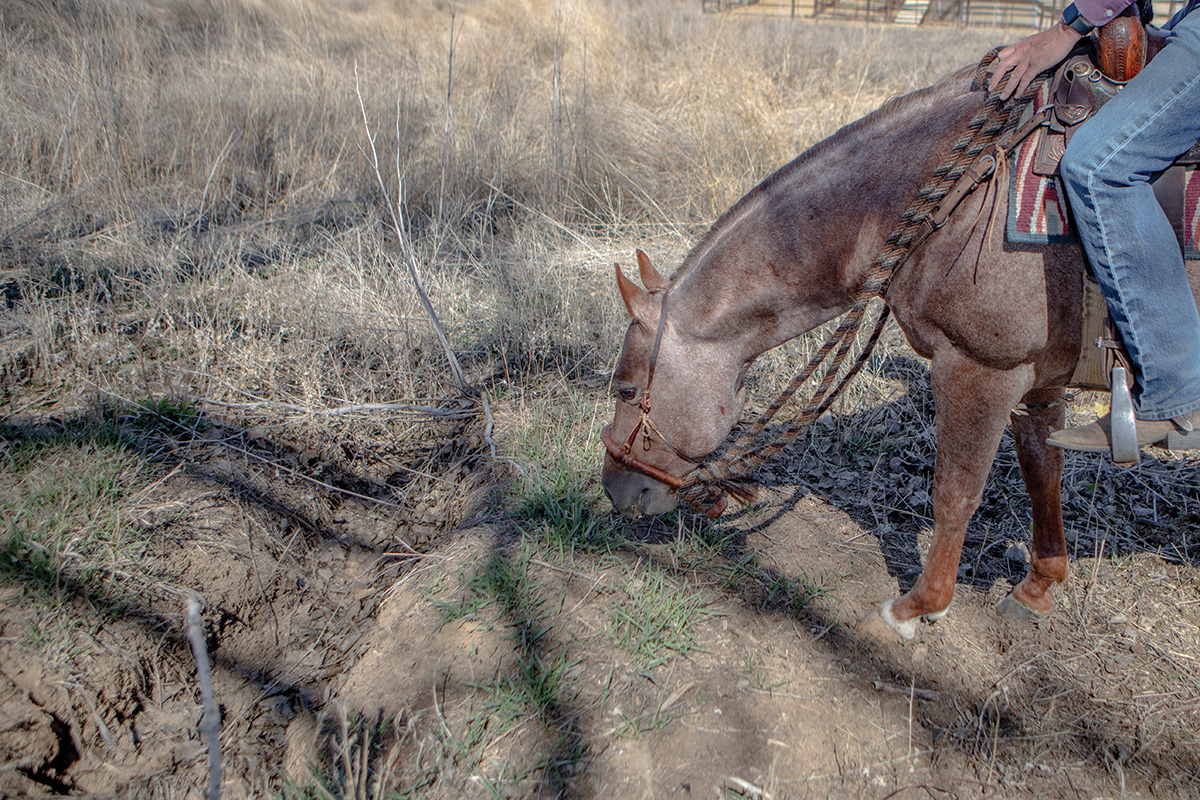
If your horse doesn’t want to cross a ditch, give him options about where to be and how hard he must work. You’ll make being close to the ditch easy. If your horse moves away from the crossing, he’ll need to go to work.
“Horses respond really well to options,” Crow says. “I’ll immediately cue my horse to work—trotting circles left and right at a fast pace. Then I’ll walk up to the ditch again and give him the opportunity to cross. If it looks like he’s interested and investigating, then I sit softly and let him think about crossing the ditch.”
If Crow feels his horse balk and want to turn away from the crossing, it’s time to go back to work.
“I go back to work, trotting or loping, depending on what the footing and grounds are like near the ditch,” he says. “For some horses, this is a quick fix. For others, this takes a long time. If a horse isn’t showing lots of fear and only mildly balks, I’ll work him for 20 to 30 seconds, then try again. If a horse has a more severe reaction to the ditch, I might work him for two to three minutes before trying again. I need to create enough work that the horse would rather choose the easier option, which is just going over the ditch. The amount of work depends on the horse and his amount of resistance.”
Moving forward in a fast-paced trot keeps the horse thinking about moving forward over the ditch.
“I’m not really a big fan of trying to back a horse in a bunch of circles when he’s already got something that he’s worried about,” says Crow. “I think that could make one try to rear up. I try to fix this with forward motion. I’ll trot the figure-8s tightly and keep his feet moving forward and freely. That’s what we want—for the horse to go forward over the ditch.”
Here, Crow demonstrates riding over the ditch between his barn and hay field. The horse he rode, Mister Fahrenheit (aka “Radar”), wasn’t sure about the 3-foot water ditch crossing, and at first balked and backed away.
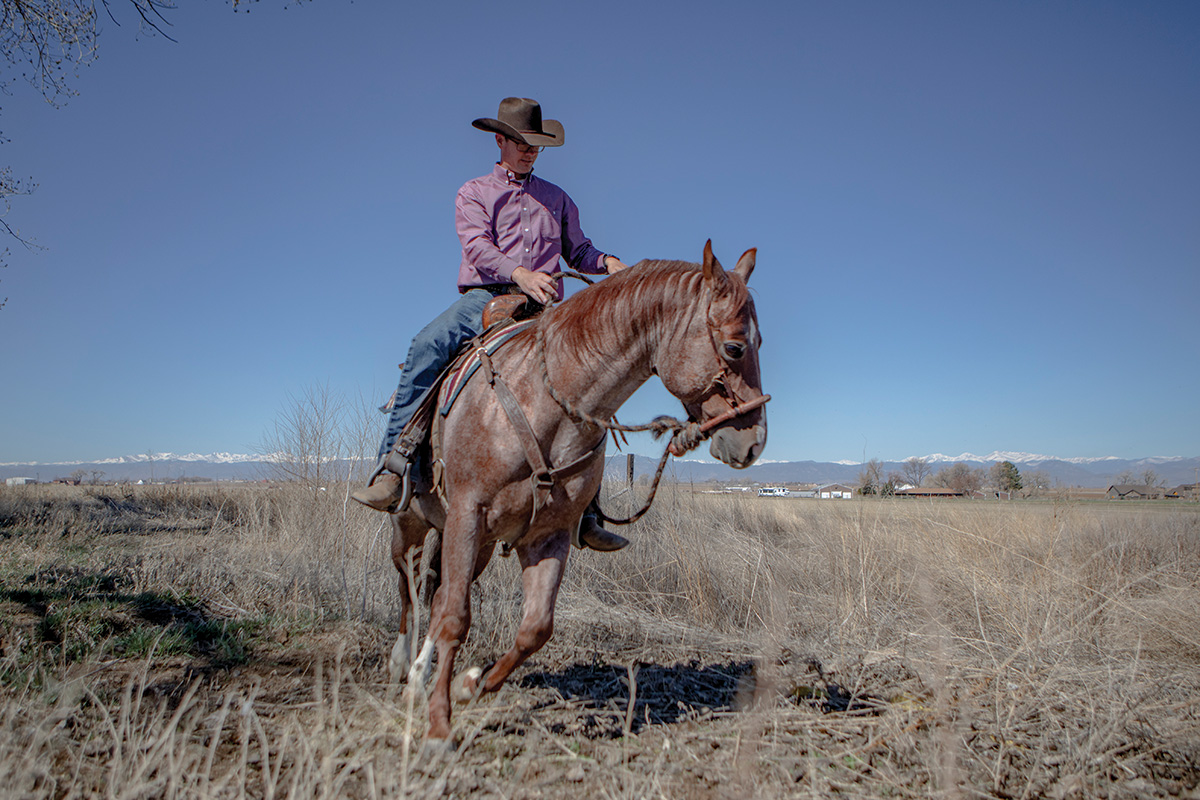
After working for only five minutes of trotting circles away from the ditch and resting at the crossing, Radar was ready to cross. His first attempt resulted in an eventing-worthy jump.
Be Prepared to Jump
Crow warns that horses who are fearful of the ditch may jump—or over-jump—on their first crossings. Be prepared to stay with the motion and land softly on the opposite side.
“If a horse has had some anxiety about the ditch, when he finally decides to get across it, he’s going to jump,” Crow says. “I’m OK with that. I just want to be prepared.”
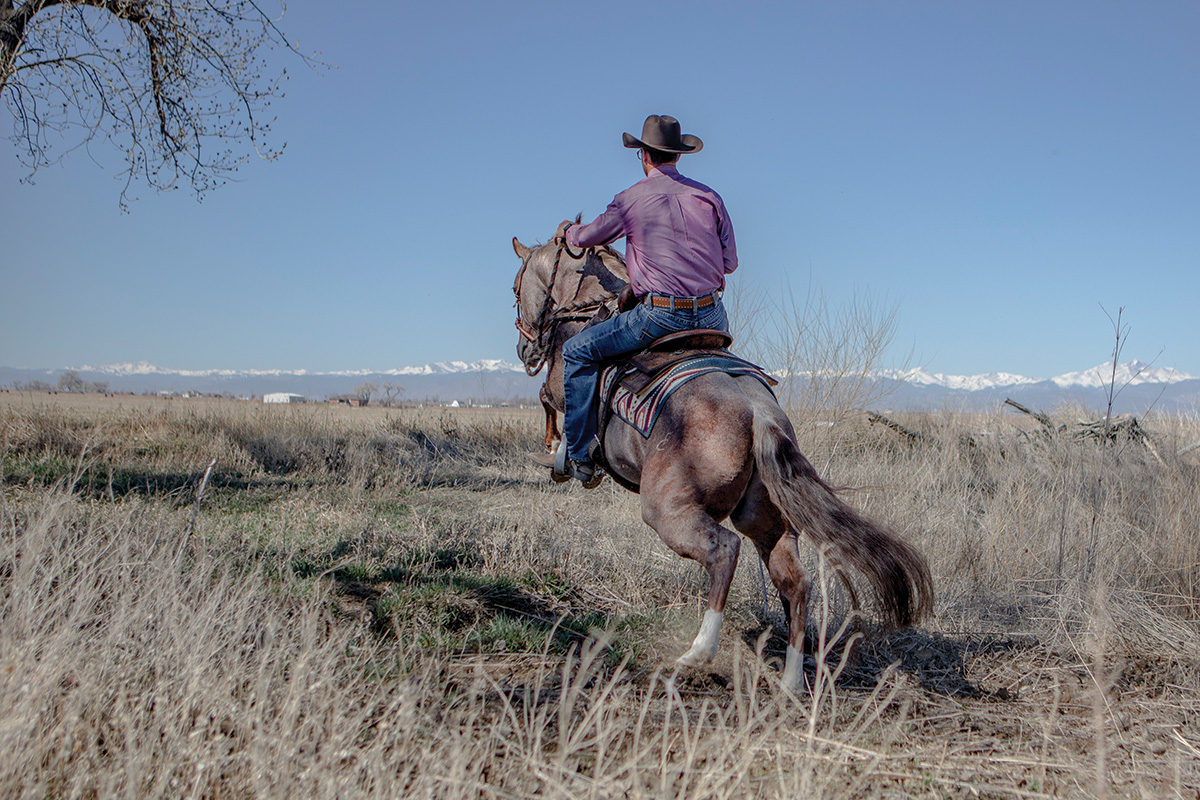
How do you prepare for a ditch jump while riding in a western saddle?
“I’ll make sure that when I’m getting ready to cross the ditch, I’m not looking down,” Crow says. “I want to have my eyes up, looking forward. I make sure that I have a hold of the horn, and I’ll lean slightly forward. I’ll make sure to give my horse enough rein so I don’t hit him in the face when he lands on the other side. You don’t want to punish the horse for finally getting across.”
Crow says that if he feels a horse taking off toward the ditch, he’ll slow the speed by pulling back on one rein before the horse crosses.
“I don’t want my horse to be ‘sucked back’ on his hocks and ready to leap,” he says. “Instead, I’ll use my reins to disengage the hind end so that he steps more than leaps.”
Keep in mind, jumping is an honest reaction for a horse.
“If the horse can’t tell how deep the ditch is, I want him to give a little hop,” Crow says. “I would much rather ride a horse that’s going to hop over a hole. That’s much safer than riding a horse that blindly steps into something where he can’t see the bottom. This is very different than if you have a graded path down to a water crossing. I don’t want a jump then. But if there’s a hole in the ground, I’m OK with the jump.”
Praise and Rest
Once Radar jumped across the ditch, Crow rewarded him with a walk on a loose rein. The pair moved up and down the ditch without turning to face it right away. After a few minutes of rest, Crow asked the horse to cross the ditch again. This time, he didn’t need as much encouragement.
Crow says forward motion is what ranch-riding judges want to see. At the highest levels of versatility ranch horse competition, the events are held outside in natural ranch settings. The judges want to see that your horse can go over and get to the obstacles and anywhere you need to work.
While the ditch may not officially be an obstacle, you may have to cross over one to get to your course. Judges want to see that your horse trusts your guidance and will move willingly wherever you point him.
Meet the TrainerCody Crow owns and operates No Where But Up Performance Horses with his team of trainers in Johnstown, Colo. He trains horses and riders to compete in versatility ranch horse, ranch riding, ranch trail, and reined cow horse competitions. He has earned world and reserve world championships and helped his horses earn titles in American Quarter Horse Association, American Paint Horse Association, Appaloosa Horse Club, National Reined Cow Horse Association, and National Snaffle Bit Association events. |
This article about how to teach your horse to cross a ditch appeared in the July 2023 issue of Horse Illustrated magazine. Click here to subscribe!

